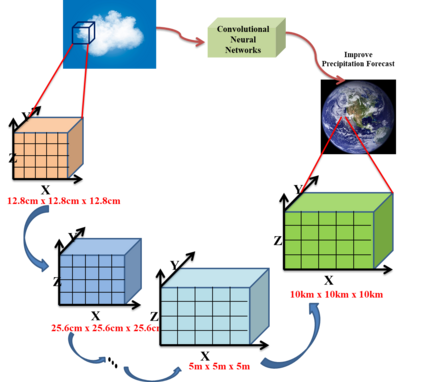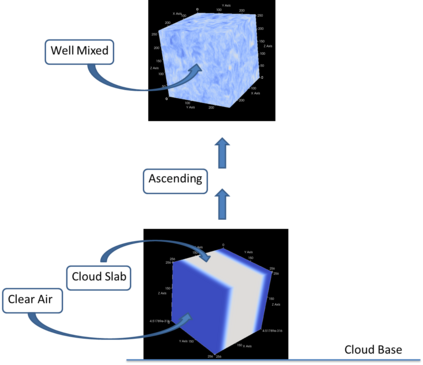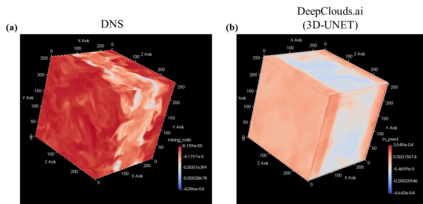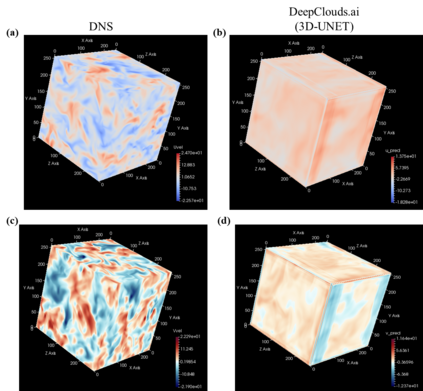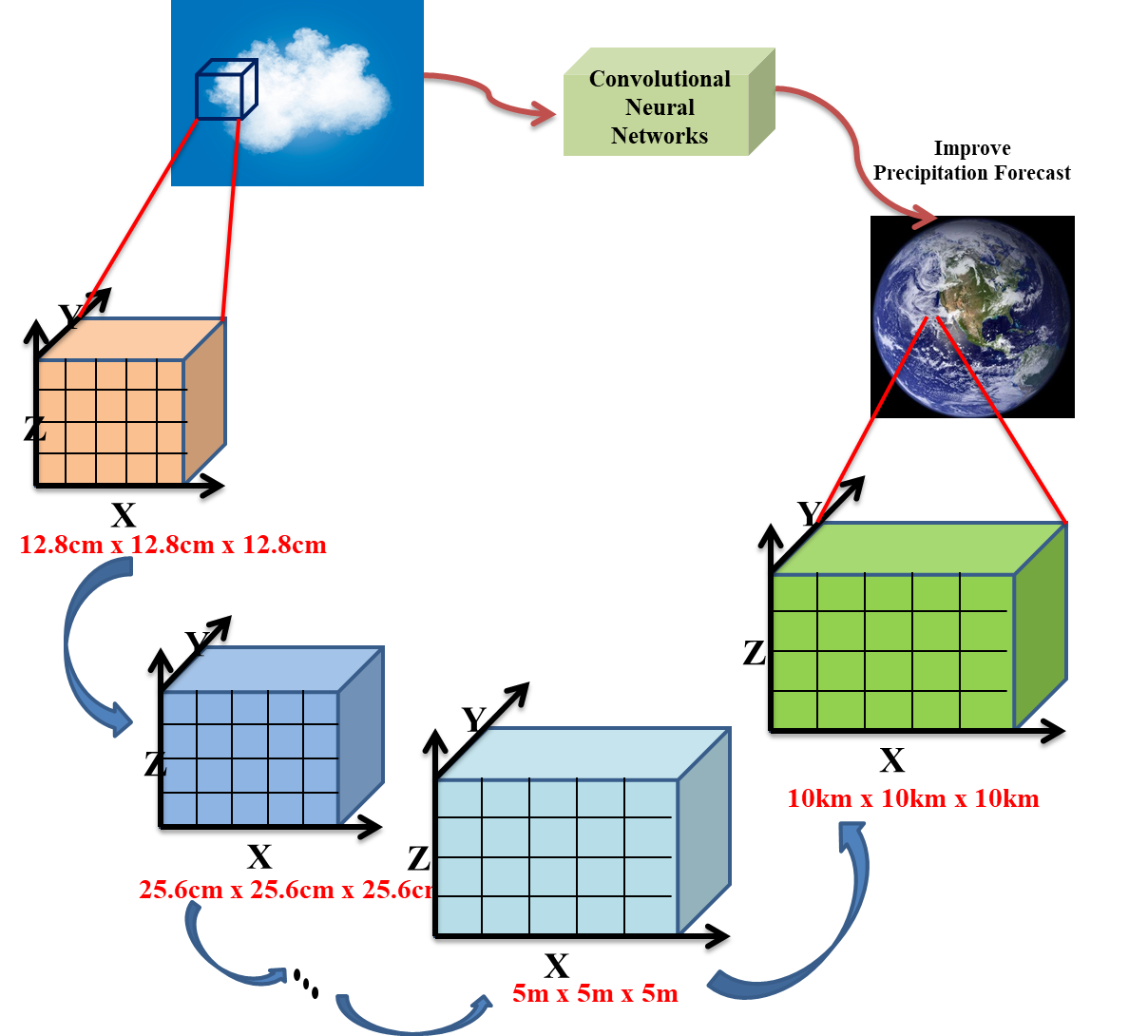Simulation of turbulent flows, especially at the edges of clouds in the atmosphere, is an inherently challenging task. Hitherto, the best possible computational method to perform such experiments is the Direct Numerical Simulation (DNS). DNS involves solving non-linear partial differential equations for fluid flows, also known as Navier-Stokes equations, on discretized grid boxes in a three-dimensional space. It is a valuable paradigm that has guided the numerical weather prediction models to compute rainfall formation. However, DNS cannot be performed for large domains of practical utility to the weather forecast community. Here, we introduce DeepClouds.ai, a 3D-UNET that simulates the outputs of a rising cloud DNS experiment. The problem of increasing the domain size in DNS is addressed by mapping an inner 3D cube to the complete 3D cube from the output of the DNS discretized grid simulation. Our approach effectively captures turbulent flow dynamics without having to solve the complex dynamical core. The baseline shows that the deep learning-based simulation is comparable to the partial-differential equation-based model as measured by various score metrics. This framework can be used to further the science of turbulence and cloud flows by enabling simulations over large physical domains in the atmosphere. It would lead to cascading societal benefits by improved weather predictions via advanced parameterization schemes.
翻译:模拟扰动流动,特别是在大气中云层边缘,是一项具有内在挑战性的任务。迄今为止,进行此类实验的最佳计算方法是直接数字模拟(DNS)。DNS涉及解决流体流的非线性局部方程式,也称为纳维埃-斯托克斯方程式,在三维空间的离散格框中进行。这是一个宝贵的范例,它指导了数字天气预测模型,以计算降雨形成。然而,DNS无法为天气预报界提供大范围实用实用用途的域进行。在这里,我们引入了DeepClouds.ai,3D-UNET,以模拟不断上升的云层DNS实验的结果。提高DNS域面积的问题通过绘制内3D立方程式,从DS离散电网模拟的输出到完整的3D方块。我们的方法有效地捕捉了动荡流动态动态模型,而不必解决复杂的动态核心。基准显示,深层次的学习模拟可以进一步比得以部分差异方程式为基础的模型,而这种模型则模拟了不断上升的云值模型,通过各种测测测度的物理气象学模型,从而改进了大气空间的模型。这个框架将可适用于大型的模型。

